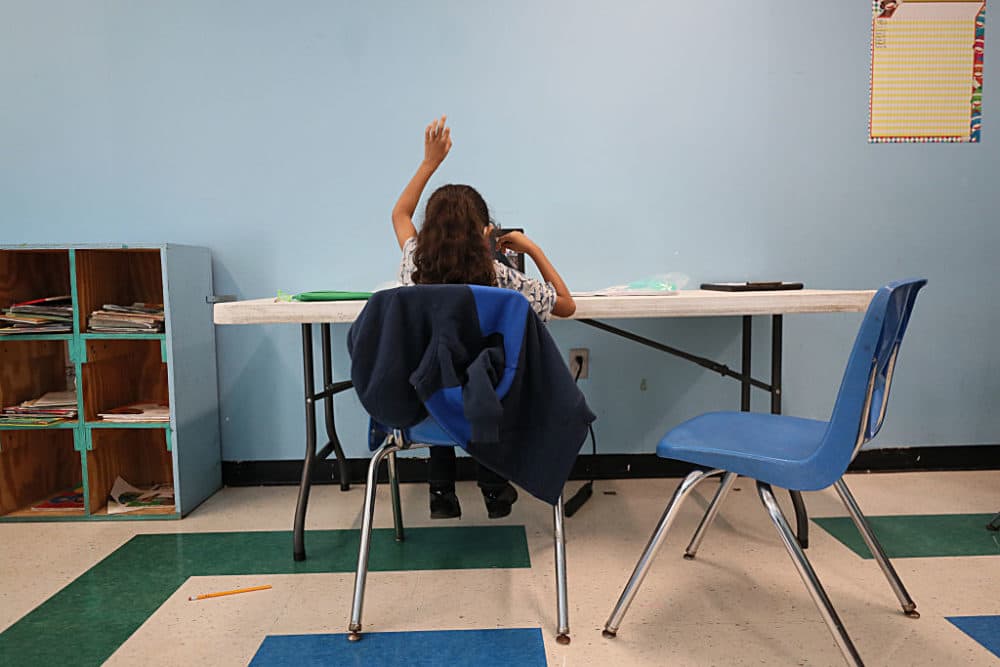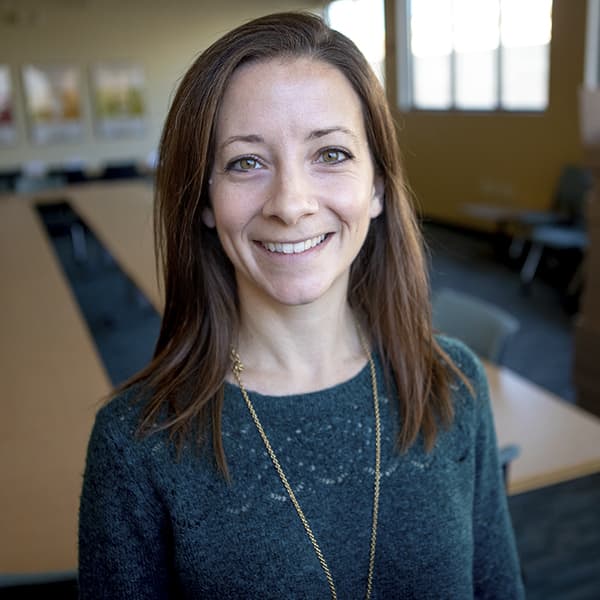Advertisement
Emergency Regulations Mandate 'Live Learning' In Schools

State education leaders have approved a new requirement for how much time educators should be teaching live classes, citing concerns about students' mental health.
The Board of Elementary and Secondary Education approve the new regulation on an emergency basis at its monthly meeting Tuesday by a vote of 7-4.
"We want to make sure we establish a baseline across the state so that all students are given the chance to get the most out of this unprecedented school year," Education Sec. James Peyser told WBUR Monday night.
Under the regulation approved Tuesday, schools in a hybrid learning model would have to provide at least an average of 35 hours of "live instruction" over a 10-school day period, across grades. The state defined "live instruction" as either in-person or synchronous remote instruction. Schools that are fully remote would have to provide at least 40 hours of synchronous instruction over a 10-school day period. If approved, the minimums would take effect Jan. 19.
Peyser said a state survey showed two-thirds of districts were already meeting those minimums. He said most districts only fell short by a "few hours over the course of the week." WBUR has requested the detailed survey data, which is currently being reviewed by districts.
The administration has been increasing pressure on districts to fully reopen in person, raising concerns about student well-being during the pandemic. In proposing the regulations, education Commissioner Jeff Riley cited a recent CDC analysis which showed children with mental health concerns made up a higher proportion of emergency department visits during the pandemic, compared to the same period last year.
"Now, some of that has to do just with the overall environment that we're all operating in," Peyser said. "But I'm convinced that some of it has to do with the isolation that students feel by being in remote learning contexts without that kind of daily and regular and meaningful interaction with their teachers and peers."
A recent survey by MassINC Polling Group sponsored by the Barr Foundation showed nearly half of respondents believed changes to the school year had some negative effect on their children's mental or emotional health. White and Asian parents were more likely to perceive a negative effect than Black and Latino parents.
"Everyday that we wait already halfway through the school year is doing cumulative and irreparable harm to the children we're here to serve," Peyser said during the board meeting approving the regulations on an emergency basis.
Worcester pediatrician Dr. Lloyd Fisher testified that colleagues have seen increasing numbers of depression and suicidal ideation in what he called a "mental health epidemic."
"I am deeply concerned about the countless other children and adolescents who are out there suffering in silence unaware of who to turn to, being cared for by parents or grandparents who are struggling to make ends meet dealing with their own depression and anxiety and simply trying to balance the increased responsibilities that come with working and also trying to assist their kids with remote learning," he said.
But many district and teachers union leaders testified that increasing required live instruction may not solve those challenges.
"The problems of the mental health of our students are real," Merrie Najimy, president of the Massachusetts Teachers Association, told WBUR. "But changing the regulations is a diversion from the root of the problem, which is the lack of overall safety net for families and workers coupled with the lack of resources that the state is willing to provide to make as much in-person learning possible and safe."
Some early educators are worried about the new proposed mandate, which would be the equivalent of four hours a day for fully remote students.
"It's just too long," said Ardith Wieworka, CEO of the Massachusetts Afterschool Partnership and former head of the state's Office of Child Care Services. "I know from personal experience supporting young kids with remote learning: after about two and a half hours, they're done."
Many children are going to after-school programs during remote learning days and logging onto class from there.
"We need to find a balance between Zooming and independent work and break time and lunch and recess," Wieworka said. "There [should be] a balance, just the way there should be if they're in school."
During the board meeting, Peyser noted that the required hours for teacher-led live instruction would be averaged across all grades, which would allow for differentiation among age groups as developmentally appropriate.
"Whenever these youngest children are learning remotely, schools and districts should be thoughtful about limiting screen time compared to older students, with a focus on using live instruction for the most critical learning objectives such as early literacy and other interactive activities," Peyser said.
The state is now accepting public comment on the approved emergency regulations, which would be up for a final vote in February.
This story has been updated to reflect the vote and board testimony.
This article was originally published on December 15, 2020.

